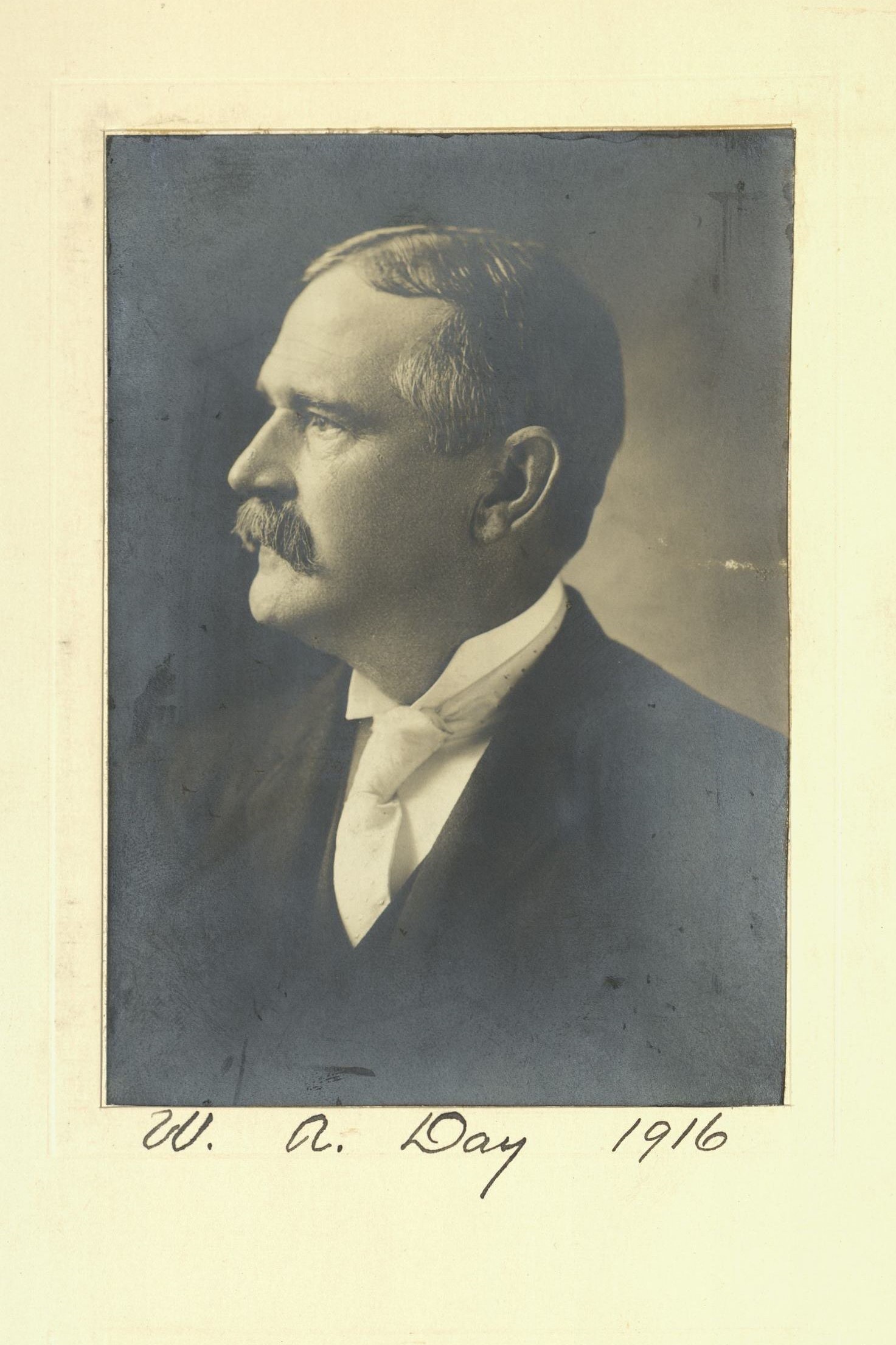President, Equitable Life Insurance Company
Centurion, 1916–1928
Born 11 June 1850 in Wilmington, Delaware
Died 8 April 1928 in Saint Augustine, Florida
Buried Sleepy Hollow Cemetery , Sleepy Hollow, New York
, Sleepy Hollow, New York
Proposed by E. H. Outerbridge and Alexander C. Humphreys
Elected 2 December 1916 at age sixty-six
Century Memorial
To William A. Day fell the happy official task of finally laying the ghost which haunted the Equitable Life for a quarter of a century. When Judge Day entered the company’s service, on the reorganization of its official personnel in 1905, an extraordinary situation had arisen. It was an era in Wall Street promotion and speculation of a scope such as was never paralleled before or since, until 1928. Money was needed in enormous and constantly increasing sums to conduct the schemes of the ambitious and excited promoters, who accordingly laid their hands on whatever possible reservoirs of capital could be discovered. The investigating committee selected from the Equitable’s directors in 1905, and supposed by Wall Street to have been designated to allay unpleasant rumors and to show that the company’s huge reserves had not been tampered with, threw Wall Street into the wildest commotion by reporting that its funds had been indirectly placed at the service of promoting enterprises. They showed the mischief to have been made possible through the fact that its $413,000,000 resources were in form, and to an extent in fact, controlled by a bare majority of the company’s $100,000 share capital, held by a young man who was officially only its vice-president.
The sensational grilling by a special state commission followed, whose searching inquiry and subsequent recommendations made a governor of New York and a future candidate for the United States presidency [Charles Evans Hughes]. The insurance law was reconstructed into more drastically restrictive terms, but the Equitable’s anomalous property interest could not be changed. Hyde’s majority stock was sold to Ryan, evoking a furious demand from Harriman for joint control; at which the public fairly gasped. From Ryan’s hands it passed into those successively of du Pont and the elder Morgan, who avowed the purpose of “mutualizing” the company through allowing it to retire its own stock with the company’s surplus funds, thereby ensuring control by policy-holders. But small as was the face value of the Equitable stock, and trifling as was the dividend which it drew from the institution’s profits, it had an indefinite “obstruction value,” and part of it remained in the hands of scattered holders who were standing out for bids that the company found it impossible to make. A dozen years slipped by with the problem of stock retirement and legal mutualization still unsolved. It was solved in the end only by the death of recalcitrant owners of the outstanding shares, seven years after Judge Day had become the Equitable’s chief.
The high ideals and the uprightness of character which Day was known by every one to possess had much to do with that happy issue of the controversy. From the first, he made no secret of his belief that the company which he served was a public institution, which should be absolutely safeguarded from the waves that beat on Wall Street. His executive duties in directing of the Equitable’s policies after 1911 were quietly and unostentatiously performed. With all his high capacity for business, his simplicity of life and manner never left him. His bequest to his fellow-countrymen is the remodeled company.
Alexander Dana Noyes
1929 Century Association Yearbook

